The Aftermath
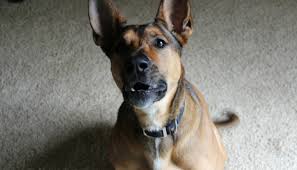
Buildings, houses and cars burning, smoke and dust in the air, your neighborhood is destroyed. Your loyal and obedient K9 is sitting quietly at your feet. Suddenly, his ears perk up, his eyes scan the area, and his nose raises up. He alerts you that someone or something is in the area and you must leave to avoid danger. Having a dog can be difficult even on a good day, and there are many pros and cons to having to bug out with your family dog if there is a major catastrophe.
Just like your family members, your dog is going to need food and water for survival. Dogs create waste, make lots of noise and take up space in your shelter and bug out vehicle. They will make travel more difficult. Worse yet, if the situation really looks dire, your dog may be someone’s next meal, which puts the both of you in danger.
You may have to tread difficult terrain, maneuver steep climbs, walk across sharp debris, glass, jagged rock and concrete which a dog may find difficult to tackle. However, dogs are a huge part of many families, they are like your children. Under the most dire of circumstances, most owners would never consider leaving their companion behind and abandoning him.
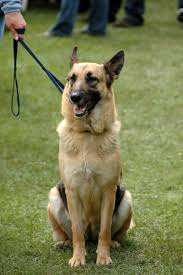
Purpose of a dog
A dog’s life reverts back to his wolf instincts. He digs, he hunts prey, he buries his food, he hides his waste and eats to survive. He is acutely aware of his surroundings at all times and holds a pack mentality. If surrounded by other dogs they will sleep in dens, and their aptitude for defense is unparalleled to other domestic animals. A trained dog can be a very useful item in a survivalist’s toolbox.
However, a typical untrained household pet is good for two things, companionship and loyalty. A survival dog needs to be trained to carry a canine backpack to carry his and additional human gear if needed. Dogs can be taught to pull a wagon, a sled or cart. But your dog will need additional training to be able to perform in this type of setting and situation. If left untrained, they can become fearful, antsy, nervous and confused. A scared or nervous dog might bite, run away or bark constantly. If you want a successful prepper dog these are all things you will want to avoid. You want your dog to be a asset to the team, not a burden.
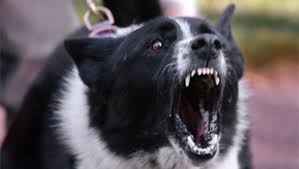
Defender
All dogs can bark, and all dogs will defend their space from an intruder, be it dog or human. If you are part of a pack, having a dog nearby will benefit you when it comes to deterring intruders, providing a stout level of protection for you and your group. Your dog will detect a visitor with his keen hearing and powerful nose long before you will. It never ceases to amaze me that my dogs will know when someone is coming to my house long before they are visible. Someone can turn the corner onto my street and my dogs can be lying resting, but as soon as they start heading our way my dogs are alerting me way before the visitor is even in sight.
Pay attention to your dog when your instincts tell you to. His demeanor, his physical appearance, mainly his body language and his actions will all change when he perceives a threat. He will stiffen up, raise hackles, stand tall, curl lips, growl, and turn sideways against the threat. His ears will drop back, and his head will sulk into his shoulders. Many people do not have the ability to read their dog’s sometimes subtle, sometimes obvious behaviors. It is actually a skill to be able to successfully read your dog.
If your dog is trained to attack on command, he must also be able to turn off on command. If you train a barking alert based on what the dog smells or hears in the distance, the dog must be trained to also stop barking and remain quiet upon direct command. It is counter intuitive in many circumstances to have continuous noise giving away your exact location to zero in on and initiate an encounter.
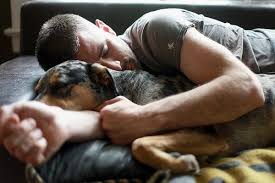
Assets
A Warm Body and Friend
Your dog can be a source of physical comfort as well as protection from intruders. Your dog can provide heat and act as a warm blanket. A dog’s normal body temperature is a couple of degrees higher than a humans, and in addition to his fur coat, he makes a warm companion on a cold night.
Because dogs instinctively sleep in dens, where they take advantage of body heat to stay warm on cold nights, you can take advantage of that same thing. Many dogs love to snuggle up and cuddle with their owner even in pleasant weather. It also offers you a feeling of safety and comfort knowing your K-9 is right there protecting you. I know when I grab my blanket and pillow in my home for nap time my dog gets so excited she can hardly wait for me to get situated before she jumps right in and snuggles up.
![]()
Sense of Direction
Dogs have a wonderful sense of direction. They use a combination of senses and perceptions to find their way and remember where they came from. They utilize their vestibular system (The vestibular system is the apparatus of the inner ear involved in balance. It consists of two structures of the bony labyrinth, the vestibule and the semicircular canals, and the structures of the membranous labyrinth contained within them) in their inner ear to navigate speeds and turns, and they unconsciously count how many steps they’ve taken from one place to another.

Weather Predictions
Dogs can also predict the weather by sensing the change in barometric pressure. Have you ever noticed your K-9 getting nervous and anxious long before a storm rolls in? Whether it is a storm or thunder, dogs are masters at predicting the terrible weather. Simple science is behind this intelligence of picking up weather conditions by dogs. Dogs are capable of sensing the barometric pressure drop and any shift in static electricity. Lightning ionizes air with the formation of ozone – which has a characteristic metallic smell. Perhaps dogs detect this odor, or some other odor associated with the storm. Animals have more developed senses than humans, such as sense of smell and hearing, and that leads to their ability to detect impending weather changes sooner. Certainly, many have a better sense of smell than we do; they can smell rain coming when it is miles away.
Canine hearing is close to twenty times more sensitive than ours. Those rumbles we might not even hear until they are upon us as full-blown thunder are sounds and vibrations your dog will certainly hear or feel well before you. This is why all that rattling really disturbs some dogs when it finally arrives in full fury.

Caring for Your Companion
The great thing about a dog is they are always ready to go do anything at anytime. However, one of the bad things about a dog is, if untrained, that he will continue to do whatever he’s occupied doing until he’s good and ready to stop. If you plan on taking your dog with you in a bug out scenario, you’ll have to take precautions to make sure he stays healthy, alert and a functional member of the team.

Food
Dogs are what is known as faculative opportunistic scavengers, which means they can and will eat anything, however in order to thrive rather than survive they need to eat raw meat, bones, organs and gland. That roadkill squirrel or buried leftover steak is mighty tasty to a dog even two weeks later. Given this, to survive, dogs can eat pretty much everything you eat and vice versa.
If you are sheltering in place, keep as much food stored for your dog as you have on hand for yourself. As I am not a fan of processed, commercial dog food, the best storage option for commercial processed food is canned. It can remain untouched for about five years before it becomes inedible. Find out how much your dog will need to eat per day so you can calculate how much food you”ll need. If he eats two cans per day, and you are planning your travel cache for 3 weeks, it’s basic math, you’ll need 42 cans, which shouldn’t take up too much storage space. The best thing about having dog food on hand is that in really tough times you can eat it too.
A better option and my first choice would be to can raw meat, glands and organs. You can fill jars with raw meat pieces, leaving 1-inch head space. You can cover the cover the meat with boiling broth, water, or tomato juice (especially with wild game). You can pressure can all types of meats from chicken, turkey, wild game, venison, elk, beef and fish. I don’t know about you but I would be more likely to eat canned meat and fish than I would dog food. On average, your dog should eat 2-3% of his body weight.
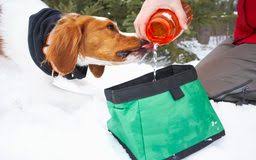
Water
Dogs will drink out of the toilet and muddy water in puddles. Just because they can do this does not mean it is safe. Dogs have iron clad stomachs and strong hydrochloric acid to be impervious to most bacteria and parasites. They eat feces and road kill without getting sick. However, outdoor water sources such as rivers, lakes and ponds carry microscopic organisms that can make your dog sick the same as they will you. These protozoa, such as giardia and cryptosporidium affect the gastrointestinal systems of dogs if they are ingested. Exposure to these protozoa can cause severe diarrhea and intestinal bleeding. Healthy dogs can often carry a protozoan without showing symptoms. However, if your dog has an underlying illness, is very old or young, or has an impaired immune system, a protozoan can be dangerous to his health.
Although the danger is not super high for dogs when drinking from natural resources, having a clean water supply is necessary to keep them healthy. So how much water should you keep on hand for your dog to drink? It all depends on their activity level, size, age and the weather, but in general, an average dog needs to drink between 8.5 to 17 ounces of water per 10 pounds (55 to 110 milliliters per kilogram) per day. If you are feeding your dog a species appropriate diet of raw meat, he will receive some of his water intake from his meal versus a dog who is fed dry kibble.

Health
Because he can’t talk to tell you what’s wrong, to keep your dog healthy you need to pay attention to his actions. If your dog looks unusually lethargic, looks tired or if something just doesn’t seem right, odds are that he is not feeling well. Without medical resources, it’s your job to find out whats wrong. Learn to read your dog. To keep all your bases covered, keep a bug out cache specifically for your dog. This should include grooming supplies, all natural flea, tick and worm preventatives, (no chemical toxins please, you want to keep his immune system in tip top shape), nail clippers, toothbrush and toothpaste specifically for your canine. I use therapeutic essential oils on all my dogs for both mental and physical issues. My top 5 bug out oils for dogs are:
Lavender- the most versatile of all the essential oils, lavender is great for anxiety, stress and is a great calming, sedative oil and stimulates mental clarity. It can be used to soothe skin, burns and wounds. It aids in itching and scratching, especially dandruff and dermatitis. Lavender oil is very safe and gentle for dogs.
Peppermint-peppermint is a great insect repellent, insecticide and works on intestinal parasites. It can also be used for ringworm, sunburn, nausea, muscle pain and stiffness. It promotes circulation and helps reduce allergies. It is anti-bacterial, anti-inflammatory, anti-fungal, anti-microbial and acts as an antiseptic.
German Chamomile-good for burns, stings and allergic reactions. Can be used for wounds, muscle pain and stiffness.
Helichyrsum-has great inflammatory properties. It’s regenerative quality makes it ideal for treating a wide range of injuries and skin conditions, including sprains and hematomas.
Niaouli-acts as a powerful healing agent that will not irritate the skin. Best used for cuts, infections, pain and other health concerns.Fights bacterial infections and boosts the immune system.
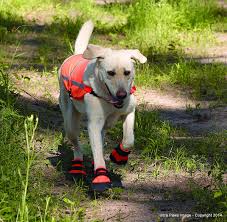
Protection
Just like humans, dogs are affected by the weather, both cold and hot. Their feet get blisters, cuts, scrapes and abrasions. And if you have a tough, stubborn dog, you may not notice anything is wrong until you see a bloody footprint or notice uncontrollable chills and shivers.
Depending on your local environment and range of weather conditions, carry a blanket or vest to help keep your dog stay warm, especially if he is a toy breed or if he is single coated, such as a Terrier, Boxer, Bulldog or Doberman Pincher. Terrain can be rough on a dogs feet, so have boots ready if you encounter glass, hot pavement, debris and jagged rocks. A dogs eyes can get affected by dust, dirt, chemicals, blowing smoke and sand, so carry a pair of doggy goggles to remedy that.

Treats and Toys
Your dog more than likely won’t understand what’s happening, so to keep him in a semblance of normalcy, try not to change his patterns and routines too drastically. If your dog is used to a treat before bed or a toss of a ball in the morning, try to continue these habits as closely as possible. Dogs are creatures of habit. Keep some healthy treats and a toy in his bug out cache. A happy dog is a healthy dog.

Tail End
Whether or not to keep a dog during uncertain times is a dilemma in itself. A dog can help you sense intruders before they have the opportunity to harm you or your family. Because people will be the greatest threats, it makes sense to have a dog for protection. Dogs can also help you with hunting and ultimately be the most essential tool in your arsenal for putting meat on the table, especially if your dog is breed specific and trained for the job.
On the other hand, if your dog is strictly a lap dog with no job to do, he might end up competing for the same resources of food and water for survival. In addition, if your dog is unhealthy, he may pick up unwanted parasites, such as fleas and ticks. If he is lazy and overweight, he could be more of a burden than an asset. Senior dogs will slow you down and need extra care because of physical and mental conditions.
If your dog is a permanent part of your pack and will follow you to the ends of the earth, make sure you understand what is at stake. You’ll need to be prepared, both mentally and physically. Know what you’ll need to keep your dog safe and happy.
Protect your dog from danger and he will do his best to protect you.
References: Essential Oils and Natural Remedies
American Survival Guide-Volume 6-Issue 9
Cesar Milan






